WILDER NATIVES
NORTHEAST US
Native to New England, New York, New Jersey, and Pennsylvania, these plants grew up here. They are best adapted to Northeast soils and climate.
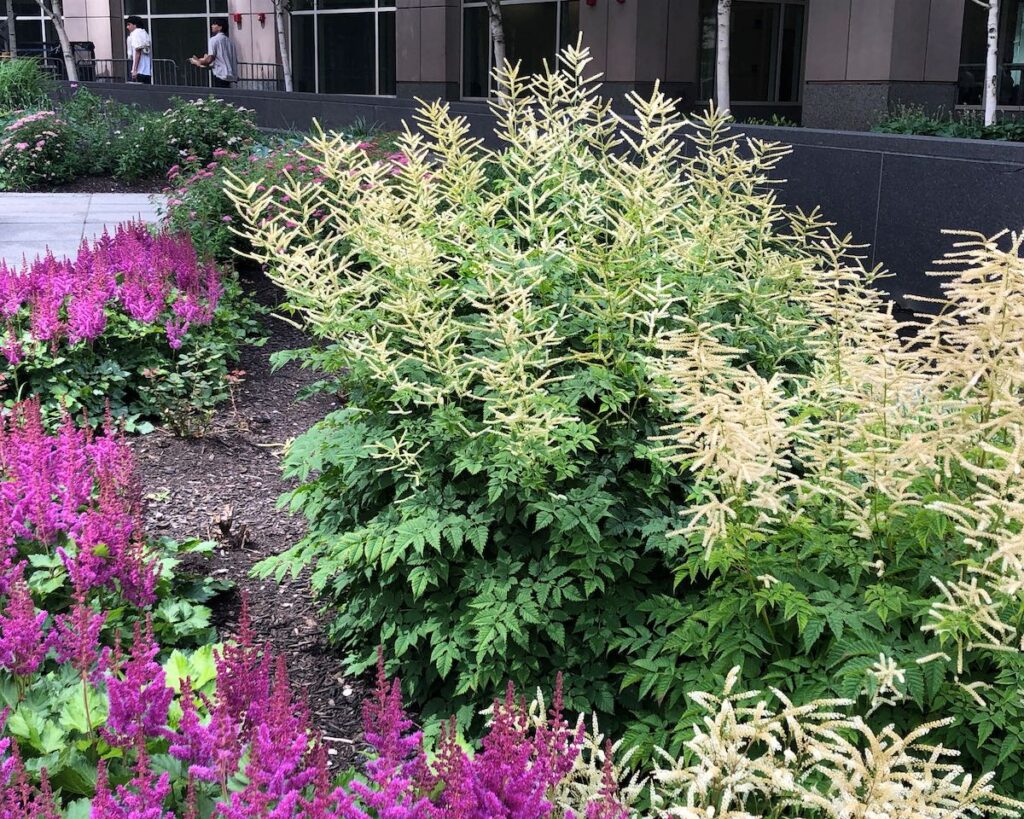
Aruncus dioicus: Goatsbeard
Think of goatsbeard as a native version of Astilbe, and you’ll be on the right track. Slowly forms broad clumps of maple-like green foliage to 6’ wide, with tantalizing sprays of frothy white blooms in early summer in bright shade. Average soils are fine, just nothing too dry. Goatsbeard is a host plant for the dusky azure butterfly, and is reported to be deer and bunny-resistant.
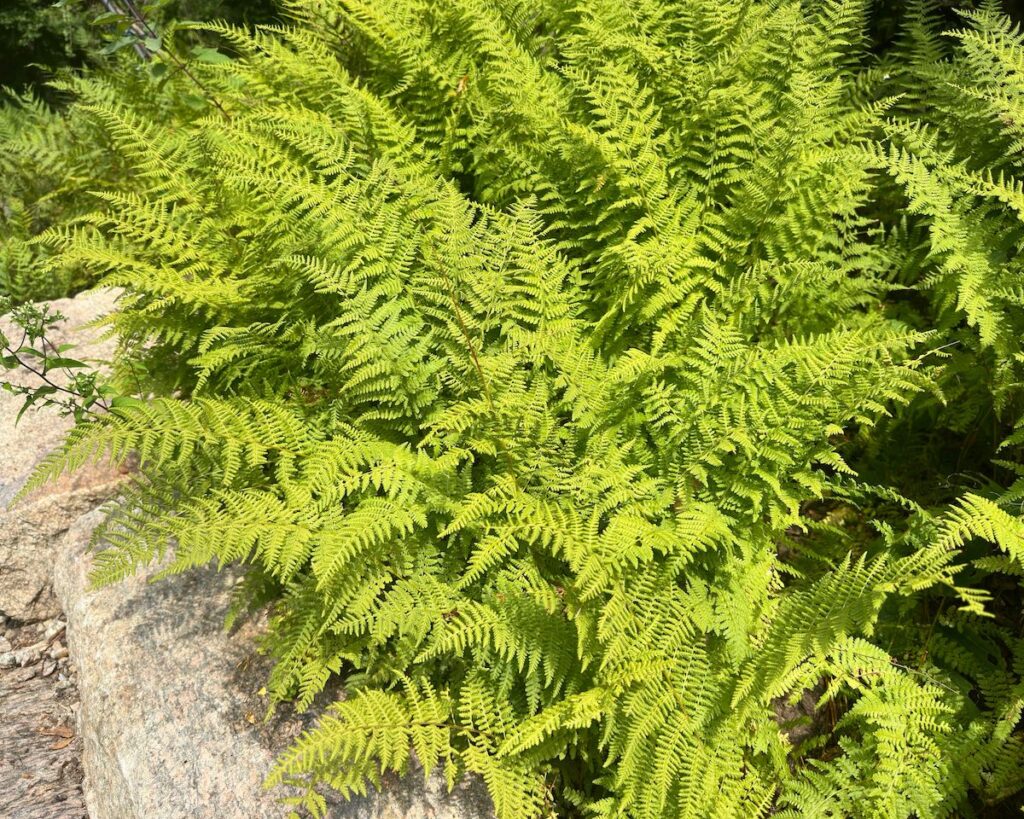
Athyrium felix femina: Lady Fern
Classically lush green-fronded 1-3’ ferns that thrive in full to part shade in generally moist conditions. Will tolerate more than half day sun, but must remain moist. Native to the Northeast US, but can be found worldwide. Will colonize slowly, and will not run. Produces new fronds throughout the growing season where happy. A textural winner!
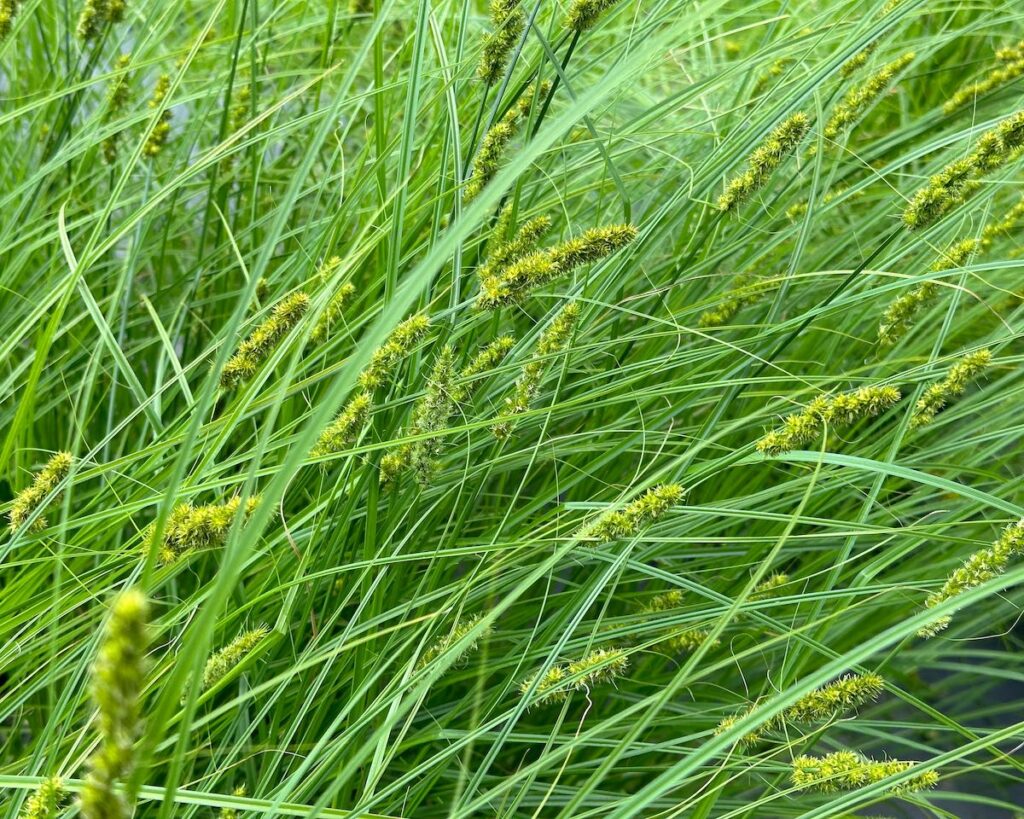
Carex vulpinoidea: Fox Sedge
As our friends at Kind Earth Growers say, we’re ‘Livin’ on the Sedge!’ Maybe not we humans, but bunches of our avian and insect friends do, and fox sedge is a favorite, with bright masses of cascading, fine grassy 1-3’ foliage, and delicate clusters of foxtail seedheads by early summer. Enjoys a sunny to part shady site, and average to moist soils.
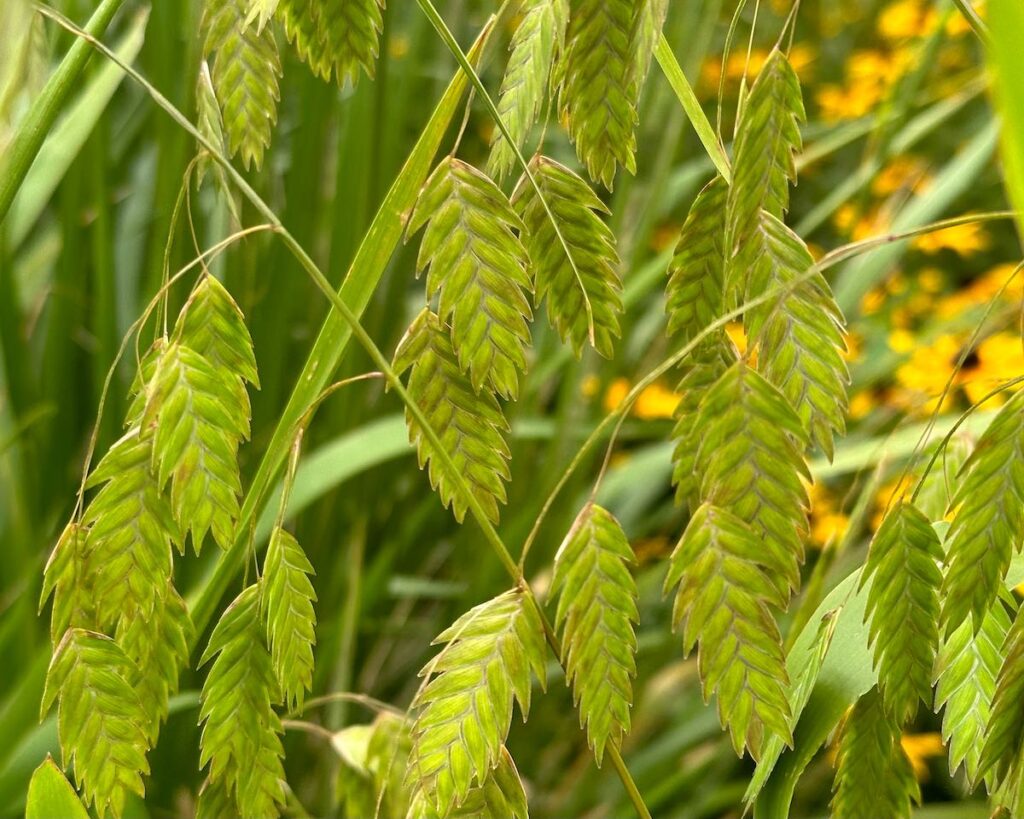
Chasmanthium latifolium: Northern Sea Oats
Sea oats’ soft green foliage is great for massing in a sunny to part-shady spot, front and center for when the main attraction hits. In midsummer, plants produce perfect 1” long ‘oat-shaped’ flat seed heads, which flicker and sway in the warm afternoon breeze. These seedheads turn a golden bronze in the fall, and last well into winter as well. A true delight!
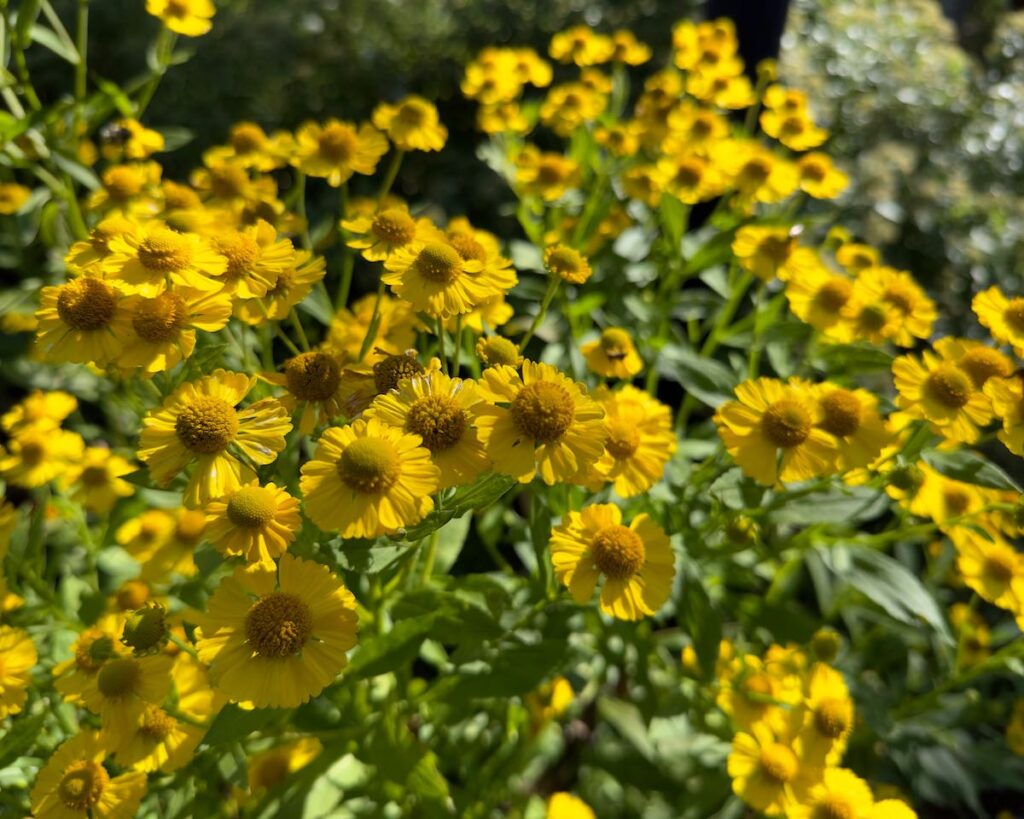
Helenium autumnale: Sneezeweed
Here’s another native that gets a bad name thanks to its consecutive bloom time with allergy-inducing ragweed. However, pollen of sneezeweed is not airborne, and is distributed by the bees and other insects which flock to these cheery golden bloomers in the late summer and fall. Sturdy stems reach 4’ tall, and plants prefer medium to moist, sunny sites. Basal foliage can get ratty, so try giving this plant ‘shoes and socks’ neighbors to help hide any bare spots. Thanks for this expression Nancy Debroule!
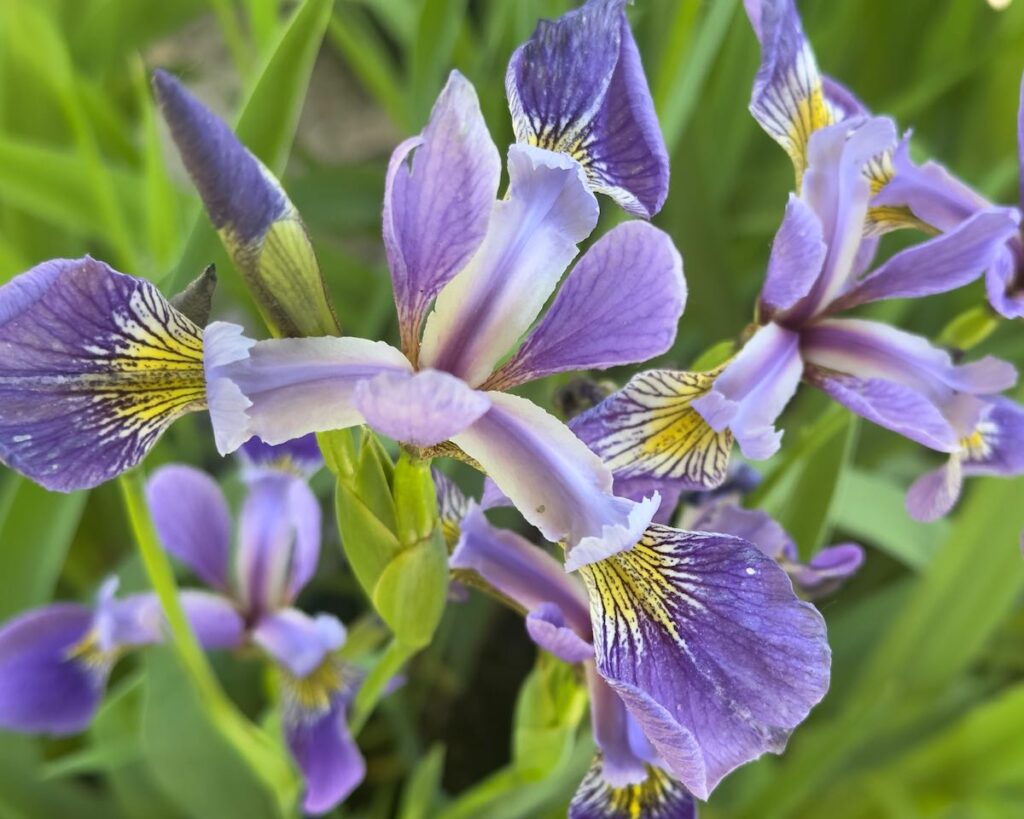
Iris versicolor: Blue Flag Iris
How beguiling the architectural blooms of blue flag iris must be to pollinators! Indeed they are visited by many species of butterflies, insects and hummingbirds when in bloom in May and June. They are happy in average garden conditions, just not too dry, as they are considered a wetland plant, and enjoy mucky even wet soils. They are super hardy (zone 2-7), and reach 2-3’ tall and wide. A terrific vertical accent plant.
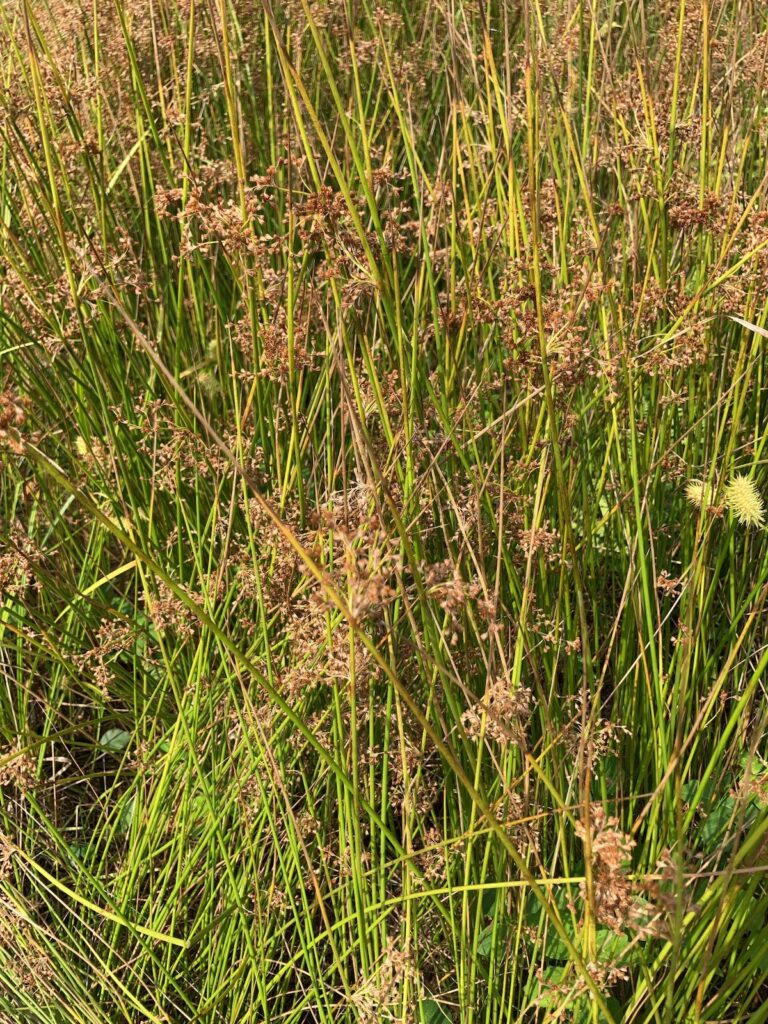
Juncus effusus: Soft Rush
Soft rush thrives in sunny wet sites, and features 1-2’ tussocks of slender upright pointy foliage. A super accent plant in a wet to boggy area, pair with Lobelia cardinalis, blue flag iris, and swamp milkweed. Forms tawny golden seed clusters on the stems in summertime. Excellent cover for ground-nesting birds, and food for various insect species.
